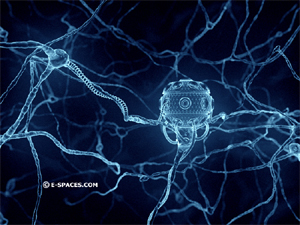More videos from the Redwood Center for Theoretical Neuroscience
...a computational framework [1] that shows how large networks of spiking neurons can store and transform analog signals for sensory processing, motor control, and statistical inference. The resulting computational systems differ from traditional artificial neural networks that are focused on the highly nonlinear properties of individual neurons, and are more in line with modern Bayesian systems. The brain is more like an analog computer than a digital one; more like a Bayesian inference machine than a symbolic one.
Out of my depth, but intriguing, as is Jack Cowan's talk: Spontaneous pattern formation in large scale brain activity: what visual migraines and hallucinations tell us about the brain.
You may recall the new Redwood Center, opened in 2005, placed a symposium's worth of videos online. It's fabulous they're webcasting regularly. Search the Internet Archive for all their releases. (As of May 12, 23 titles, freely available and distributable through Creative Commons).
Tags: videos webcast theoretical neuroscience AI






